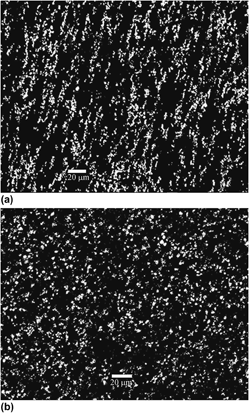Crossref Citations
This article has been cited by the following publications. This list is generated based on data provided by
Crossref.
James, N K
Lafont, U
van der Zwaag, S
and
Groen, W A
2014.
Piezoelectric and mechanical properties of fatigue resistant, self-healing PZT–ionomer composites.
Smart Materials and Structures,
Vol. 23,
Issue. 5,
p.
055001.
Xu, Tingting
Wang, Chang‐An
and
Feteira, A.
2014.
Piezoelectric Properties of a Pioneering 3‐1 Type PZT/Epoxy Composites Based on Freeze‐Casting Processing.
Journal of the American Ceramic Society,
Vol. 97,
Issue. 5,
p.
1511.
Saeed, Muhammad-Umar
Chen, ZhaoFeng
and
Li, BinBin
2015.
Manufacturing strategies for microvascular polymeric composites: A review.
Composites Part A: Applied Science and Manufacturing,
Vol. 78,
Issue. ,
p.
327.
Loock, F Van
Deutz, D B
Zwaag, S van der
and
Groen, W A
2016.
Exploring the piezoelectric performance of PZT particulate-epoxy composites loaded in shear.
Smart Materials and Structures,
Vol. 25,
Issue. 8,
p.
085039.
Shaji Karapuzha, Amal
Kunnamkuzhakkal James, Nijesh
van der Zwaag, Sybrand
and
Groen, Wilhelm Albert
2016.
On the use of non-MPB lead zirconium titanate (PZT) granules for piezoelectric ceramic–polymer sensorial composites.
Journal of Materials Science: Materials in Electronics,
Vol. 27,
Issue. 9,
p.
9683.
James, Nijesh K.
Deutz, Daniella B.
Bose, Ranjita K.
van der Zwaag, Sybrand
Groen, Pim
and
Zhang, S.
2016.
High Piezoelectric Voltage Coefficient in Structured Lead‐Free (K,Na,Li)NbO3 Particulate—Epoxy Composites.
Journal of the American Ceramic Society,
Vol. 99,
Issue. 12,
p.
3957.
Sanches, Alex Otávio
Malmonge, José Antônio
and
Sakamoto, Walter Katsumi
2017.
Recent Advances in Complex Functional Materials.
p.
195.
Lei, Qin
Foster, Robert
Grant, Patrick S.
and
Grovenor, Chris
2017.
Generalized Maxwell Fish-Eye Lens as a Beam Splitter: A Case Study in Realizing All-Dielectric Devices From Transformation Electromagnetics.
IEEE Transactions on Microwave Theory and Techniques,
Vol. 65,
Issue. 12,
p.
4823.
Khaliq, Jibran
Deutz, Daniella Bayle
Frescas, Jesus Alfonso Caraveo
Vollenberg, Peter
Hoeks, Theo
van der Zwaag, Sybrand
and
Groen, Pim
2017.
Effect of the piezoelectric ceramic filler dielectric constant on the piezoelectric properties of PZT-epoxy composites.
Ceramics International,
Vol. 43,
Issue. 2,
p.
2774.
Kang, Sang-Hyeon
Kang, Myeongcheol
and
Kang, Lae-Hyong
2018.
Piezoelectric smart composite blades for collision monitoring: Measurement of mechanical properties and impact sensitivity.
Composite Structures,
Vol. 202,
Issue. ,
p.
1295.
Chen, Hairong
Xia, Hong
Qiu, Yiping
Xu, Zhenzhen
and
Ni, Qing-Qing
2018.
Smart composites of piezoelectric particles and shape memory polymers for actuation and nanopositioning.
Composites Science and Technology,
Vol. 163,
Issue. ,
p.
123.
de Freitas, Ricardo Luiz Barros
Sakamoto, Walter Katsumi
Freitas, Luciana Paro Scarin
Castro, Fabian
Lima Filho, Antonio P.
Kitano, Claudio
and
de Carvalho, Aparecido Augusto
2018.
Characterization of PZT/PVDF Composite Film as Functional Material.
IEEE Sensors Journal,
Vol. 18,
Issue. 12,
p.
5067.
Kushch, Volodymyr I.
Springhetti, Roberta
and
Shmegera, Sergii V.
2018.
Effective permittivity of composite elastomer with account of electric conductivity of phases and imperfect interface.
International Journal of Engineering Science,
Vol. 123,
Issue. ,
p.
51.
Lou, Lihua
Yu, Weijie
and
Ramkumar, Seshadri
2019.
High Performance Technical Textiles.
p.
439.
Hayati, Raziye
Fayazi, Mohammad
Diargar, Hadi
Kaveh, Mohammad
and
Tayebi, Lobat
2020.
Electrical and mechanical properties of BZT − xBCT lead‐free piezoceramics.
International Journal of Applied Ceramic Technology,
Vol. 17,
Issue. 4,
p.
1891.
Krishnaswamy, Jagdish A.
Rodriguez-Tembleque, Luis
Melnik, Roderick
Buroni, Federico C.
and
Saez, Andres
2020.
Size dependent electro-elastic enhancement in geometrically anisotropic lead-free piezocomposites.
International Journal of Mechanical Sciences,
Vol. 182,
Issue. ,
p.
105745.
Pessia, Zachary R
Cunningham, Craig A
Krech, E D
and
Friis, E A
2020.
Power amplification via compliant layer interdigitation and dielectrophoretic structuring of PZT particle composites.
Smart Materials and Structures,
Vol. 29,
Issue. 7,
p.
075004.
Grzybek, Dariusz
Kata, Dariusz
Sikora, Wojciech
Sapiński, Bogdan
Micek, Piotr
Pamuła, Hanna
Huebner, Jan
and
Rutkowski, Paweł
2020.
Piezoelectric Particulate Composite for Energy Harvesting from Mechanical Vibration.
Materials,
Vol. 13,
Issue. 21,
p.
4925.
Eltouby, Pakinam
Shyha, Islam
Li, Chunchun
and
Khaliq, Jibran
2021.
Factors affecting the piezoelectric performance of ceramic-polymer composites: A comprehensive review.
Ceramics International,
Vol. 47,
Issue. 13,
p.
17813.
D'Ambrogio, Giulia
Zahhaf, Omar
Hebrard, Yoann
Le, Minh Quyen
Cottinet, Pierre‐Jean
and
Capsal, Jean‐Fabien
2021.
Micro‐Structuration of Piezoelectric Composites Using Dielectrophoresis: Toward Application in Condition Monitoring of Bearings.
Advanced Engineering Materials,
Vol. 23,
Issue. 1,



